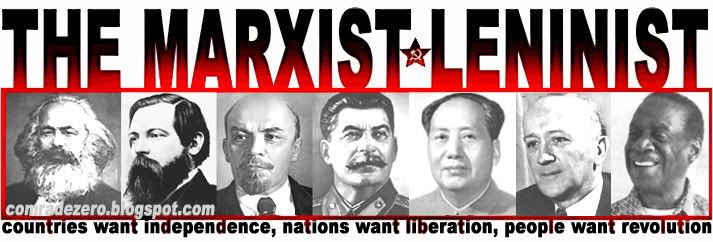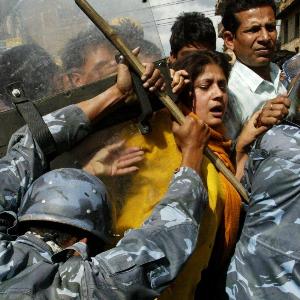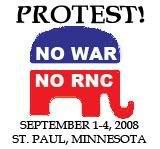On the Verge of Revolution in Nepal
From Fight Back News Service:
As of April 24, Nepal's King Gyanendra appears to be nearing his last days in power. Huge mass protests of hundreds of thousands of people are defying a shoot-to-kill curfew after 19 days of a general strike. Massive crowds are gathering on the outskirts of the capital, Katmandu, and attempting to move slowly into the city in the face of the Royal Nepal Army shooting into the crowds. Presumably the protesters are trying to get to the center of Katmandu to the Royal Palace, which was cordoned off a couple days ago with barbed wire and military troops.
The Nepali people have taken up in a mass way the demands of the Communist Party of Nepal (Maoist) - an end to the monarchy, the creation of a constituent assembly and the formation of a democratic republic. Nepal is one of the poorest countries in the world, run by a semi-feudal monarchy that is dominated by imperialism.
The Communist Party of Nepal (Maoist) has led a powerful people's war that has liberated large parts of the countryside over the past ten years. Last February, King Gyanendra seized absolute power, dissolving the country's parliament and arresting many leaders of the country's seven main legal political parties. After months of appealing to the king in vain to restore the parliament, the seven parliamentary parties finally made an alliance with the Communist Party of Nepal (Maoist), forging a 12 point agreement. So far the alliance has held and the seven parties called a general strike a little over two weeks ago with the tacit support of the Maoists.
While hundreds of thousands of people take the streets around Katmandu, the Maoists have launched large military attacks in the countryside, including a bold attack just 60 miles from Katmandu where hundreds of rebel soliders of the CPN(M)'s People's Liberation Army simultaneously attacked an army barracks, a telecommunications tower and several government buildings in Chautara.
Last week on April 21, with hundreds of thousands of Nepalis in the streets demanding his ouster, and with his imperialist sponsors in the US and India threatened to pull the plug on him, King Gyanendra made a speech in which he offered to "restore democracy". What he meant was that Nepal would return to the parliamentary monarchy setup that Nepal has had since 1990 and that he had dissolved in February 2005 when he took total power. King Gyanendra offered this proposal to save himself from certain defeat, under sharp pressure from the US, British and Indian governments, which all immediately lauded the King's offer as a breakthrough.But for the people of Nepal, it appears to be too little to late. There were already hundreds of thousands of people in the street demanding an end to the monarchy entirely, not a return to a parliamentary monarchy.
On April 17 the Communist Party of Nepal (Maoist) put out a statement urging the masses and the political parties to reject any such offer should one be forthcoming, and instead to follow the masses in demanding an end to the monarchy and the creation of a new government. According to the statement, "The time has come to see off from the stage of history the royal fascist elements...by dispensing a decisive last blow now." The seven parliamentary parties rejected the king's offer and have continued the mass protests. At the same time, imperialist powers are continuing to work overtime to try to broker a deal between the king and the parties to try to save the king and keep the Communist Party of Nepal (Maoist) out of power.
For now it seems a deal to save the king is unlikely and the future of Nepal is being written by the masses of people in the streets. It appears to only be a matter of time, and a short amount of time at that, before the protests make it to the palace and the king either gets out in time and lives out his life in exile, or he doesn't get out in time and meets a less pleasant future.
Labels: Fight Back, Maoism, national liberation, Nepal, People's War, South Asia











0 Comments:
Post a Comment
<< Home